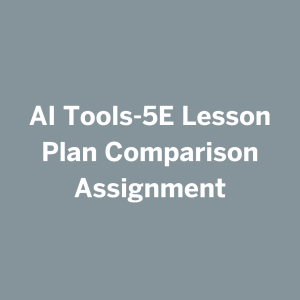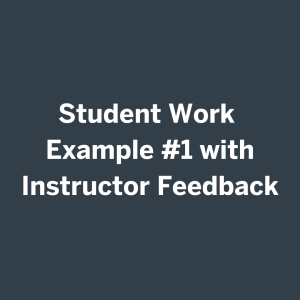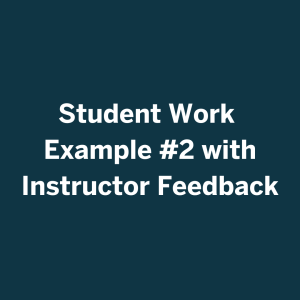7 Creating 5E Teacher Lesson Plans with AI (UTeach)
|
|
Description of resource(s):
During the student teaching seminar, I introduced my students to MagicSchool.ai and demonstrated some of the 60+ tools that are available on the platform. In addition, I had one-on-one conversations with my students to share more information and encourage them to use the various teaching aids offered by the resource. My aim was to help them enhance their work throughout the student teaching experience. I also monitored the extent to which the students used the tools and the changes they made to the AI-generated materials.
Links to Resources:
Why I implemented this:
I introduced MagicSchool.ai into an upper-division course for students who were completing the UTeach apprentice teaching experience. The UTeach Teacher Preparation Program had 22 students enrolled in their final field experience. The course met once per week during evening seminars, with additional support provided through classroom observations and 1:1 meetings throughout the semester.
During Seminar 2, I introduced AI to assist teachers in their work. In Seminar 3, we discussed the assignment to create a 5E Lesson using MagicSchool.ai, as well as other ways to utilize MagicSchool.ai to assist with blended learning assignments embedded in the course. My primary aim was to determine how my students would use AI for lesson planning, the enhancements they would make to the AI-generated materials, and the extent to which student teachers would continue using AI to influence their development as teachers.
Throughout the student teaching seminar and 1:1 conversations with students, I frequently referred to MagicSchool.ai and demonstrated some of the many tools embedded in the resource. Providing frequent reminders of the practical applications of AI facilitated engagement and empowered students to explore more on their own.
One of the assignments for student teachers involved creating a 5E lesson using the 5E Model Lesson Plan tool in MagicSchool.ai and enhancing the lesson based on their previous knowledge of the 5E Learning Cycle. Students then completed a written reflection that included the following prompts:
- Determine the positives/deltas of the AI-generated lesson plan.
- Discuss the enhancements they made to the AI-generated lesson plan.
- Implement the lesson plan and share a reflection on implementation success.
- Discuss how they plan to continue/discontinue the use of Magicschool.ai
My main takeaways:
Student teachers in the UTeach program have mixed views on the AI tool for lesson planning. While MagicSchool is praised for creating 5E plans and offering flexibility, concerns arise regarding personalization and resource accessibility. Despite drawbacks, many plan to continue using the AI tool, adapting suggestions to fit their needs. Most appreciated the structured framework provided, but a few mentioned overreliance on AI and ethical implications. However, the majority of my students positively confirm that MagicSchool remains valuable for idea generation and time saving in lesson preparation.
What else should I consider?
Timing: Approximately 30 minutes of class time was used for sharing AI strategies during the seminar.
Reviewing the AI Tools-5E Lesson Plan Comparison Assignment required approximately 10-15 minutes per student to review the 1) AI generated lesson plan, 2) student revised lesson plan, and 3) reflection comments provided by the student. Instructor feedback comments were also provided for each submission.
Context: Any upper division course intended to assist with teacher preparation could use these resources. The integration into upper division is critical since lower division teacher preparation courses include extensive instruction on the lesson planning process. This background knowledge in lesson planning ensures that students have the understanding to adequately use AI technologies and refine AI generated products. Encouraging the critical analysis of a lesson plan generated through AI, discerning variances between the proposed plan and their existing understanding of the 5E learning cycle is most applicable to students in their final field placement, such as student teaching.
Potential Pitfalls: Possibly prepare for students adamantly against the use of AI. I did have a few students who expressed comments such as:
Paraphrased Comments:
Example 1: “I don’t support the use of AI, especially in fields like art and writing, as I find it unethical. This assignment didn’t excite me because it goes against my beliefs. Even after trying to keep an open mind and creating a lesson plan, I still don’t see the value in using AI.”
Example 2: “The only good thing about using AI for lesson planning is that it saves time. But after trying it once, I’ve decided not to use AI for lesson planning in the future. The ethical concerns and the loss of skill in writing lesson plans make me certain that I won’t use AI again.”








